Disclosure: This article contains affiliate links. We may earn a commission from purchases at no extra cost to you, which helps our travel content.
Standing barefoot on the cool stone steps of Triveni Ghat as the Ganges flowed past, I was reminded of a similar moment months earlier—watching pilgrims ascend the monumental Baroque stairway of Bom Jesus do Monte in Braga on their knees. Two sacred places, worlds apart geographically and theologically, yet connected by humanity's enduring quest for transcendence. After two decades covering cricket matches across India and rugby tournaments throughout Europe, I've developed an eye for the cultural frameworks that shape both sporting traditions and spiritual practices. This autumn, I embarked on a two-week journey specifically to explore the religious architectural heritage of Rishikesh, India and Braga, Portugal—two cities where devotion has been carved into stone, painted onto ceilings, and woven into the very fabric of daily life. What follows is not merely a travelogue but an exploration of how faith shapes spaces, and how these spaces in turn shape us.
Rishikesh: Where the Sacred River Shapes Spirituality
Rishikesh sits cradled in the foothills of the Himalayas, where the Ganges emerges from the mountains with a youthful vigor before meandering across the North Indian plains. The city's architecture reflects this riverine influence—temples and ashrams line the banks, their ghats (stone steps) descending into the sacred waters like ancient amphitheaters facing nature's greatest stage.
The 13th-century Neelkanth Mahadev Temple, dedicated to Lord Shiva, demonstrates how Hindu sacred architecture embraces its natural surroundings. Unlike Western religious buildings that often impose geometric order upon nature, this temple seems to grow organically from the forest floor, its shikhara (spire) echoing the mountain peaks behind it. During my visit, I hiked through 12 kilometers of forest paths to reach it, passing groups of orange-robed sadhus making the same pilgrimage.
"This is not architecture that dominates landscape," explained Vijay, my local guide. "It is architecture that honors it." As a former sports journalist, I couldn't help but compare this to how traditional sports like kabaddi or mallakhamb in India are played not on standardized courts but on grounds that adapt to local conditions.
At the Parmarth Niketan Ashram, I witnessed evening Ganga Aarti ceremonies where architecture serves as a backdrop for ritual. The amphitheater-like ghats accommodate hundreds of worshippers and visitors, creating a communal experience where the boundary between performer and audience dissolves—not unlike the cricket grounds of Dharamsala or Chennai where spectators become participants in a larger cultural moment.

💡 Pro Tips
- Visit Neelkanth Mahadev Temple early morning (before 10 AM) to avoid both crowds and midday heat
- Pack modest, lightweight clothing that covers shoulders and knees for temple visits
- Consider staying at an ashram for at least two nights to experience the daily rhythm of spiritual practices
Braga: Baroque Grandeur and Mountain Sanctuaries
Arriving in Braga after Rishikesh creates a fascinating architectural counterpoint. Known as the "Rome of Portugal," this ancient city presents a distinctly European approach to sacred space. Where Rishikesh's temples often blend with their surroundings, Braga's churches and cathedrals command attention through vertical emphasis and ornate detailing.
The Braga Cathedral (Sé de Braga), Portugal's oldest, exemplifies this difference. Its imposing Romanesque structure, later embellished with Gothic and Baroque elements, creates a sense of human achievement reaching toward the divine. Inside, gilded woodwork and elaborate tile panels tell biblical stories with an almost theatrical flair.
"In European sacred architecture, the building itself is often the miracle," noted Professor Maria Gonçalves, an architectural historian I met while photographing the cathedral's façade. "The technical achievement of these structures was meant to inspire awe."
Yet Braga's most remarkable sacred site, Bom Jesus do Monte, reveals surprising parallels with Rishikesh. This hilltop sanctuary, reached by climbing a monumental zigzagging staircase of 577 steps, creates a pilgrimage experience not unlike the journey to Neelkanth Mahadev. Each landing features chapels depicting the Stations of the Cross, making the physical ascent a spiritual narrative—a concept familiar in Hindu temple design as well.
For capturing the architectural details and sweeping vistas of both locations, I relied heavily on my versatile travel lens. Its range allowed me to photograph both intimate architectural details and expansive landscapes without constantly changing equipment.
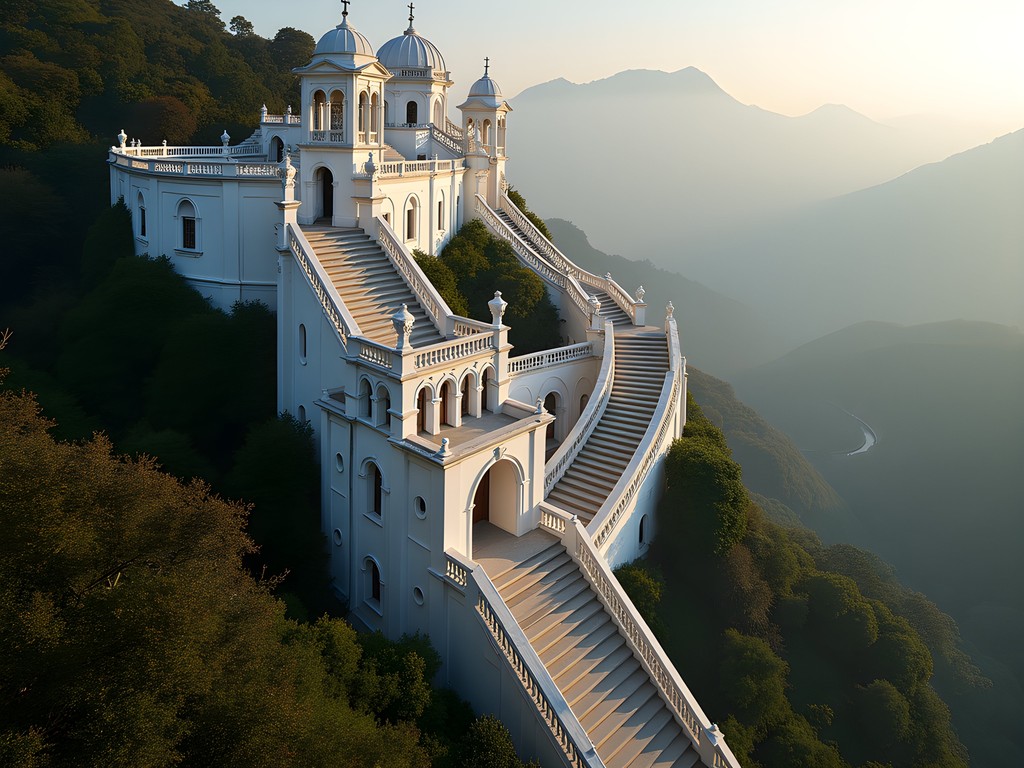
💡 Pro Tips
- Purchase a combined ticket for Braga's main religious sites at the tourism office to save money
- Wear comfortable shoes with good traction for the Bom Jesus staircase, especially in autumn when steps can be slippery
- Visit the Braga Cathedral early on weekdays to avoid tour groups and experience the morning light through the stained glass
Water as Sacred Element: Comparative Rituals
In both Rishikesh and Braga, water emerges as a central element in sacred architecture and ritual practice, though expressed in dramatically different ways.
The Ganges in Rishikesh isn't merely adjacent to temples—it's integral to their purpose and design. At Ram Jhula and Laxman Jhula, the iconic suspension bridges spanning the river, I watched as pilgrims performed snan (ritual bathing) directly in the flowing waters. The architecture of the ghats creates a graduated approach to this immersive experience, with steps leading devotees from the mundane world into direct contact with the divine represented by the river.
"For Hindus, the Ganges is not symbolic of purity—it is purity itself," explained Swami Chidananda at the Sivananda Ashram. "The architecture merely facilitates our connection to what is already sacred."
In contrast, Braga's relationship with water is more controlled and representational. At the Sanctuary of Our Lady of Sameiro, elaborately carved fountains channel water into basins where visitors collect it in small bottles. The Baroque fountain of Santa Barbara Garden in central Braga transforms water into ornamental display rather than ritual medium.
Yet at Bom Jesus do Monte, I discovered a fascinating parallel to Rishikesh's immersive approach. Here, the Baroque staircase incorporates the Five Senses Fountain, where pilgrims traditionally wash their hands, face, and sometimes feet—a ritual cleansing reminiscent of Hindu practices, though more restrained in expression.
To document these water rituals in varying light conditions, my waterproof camera proved invaluable, allowing me to capture images near fountains and along the misty Ganges shores without concern for equipment damage.
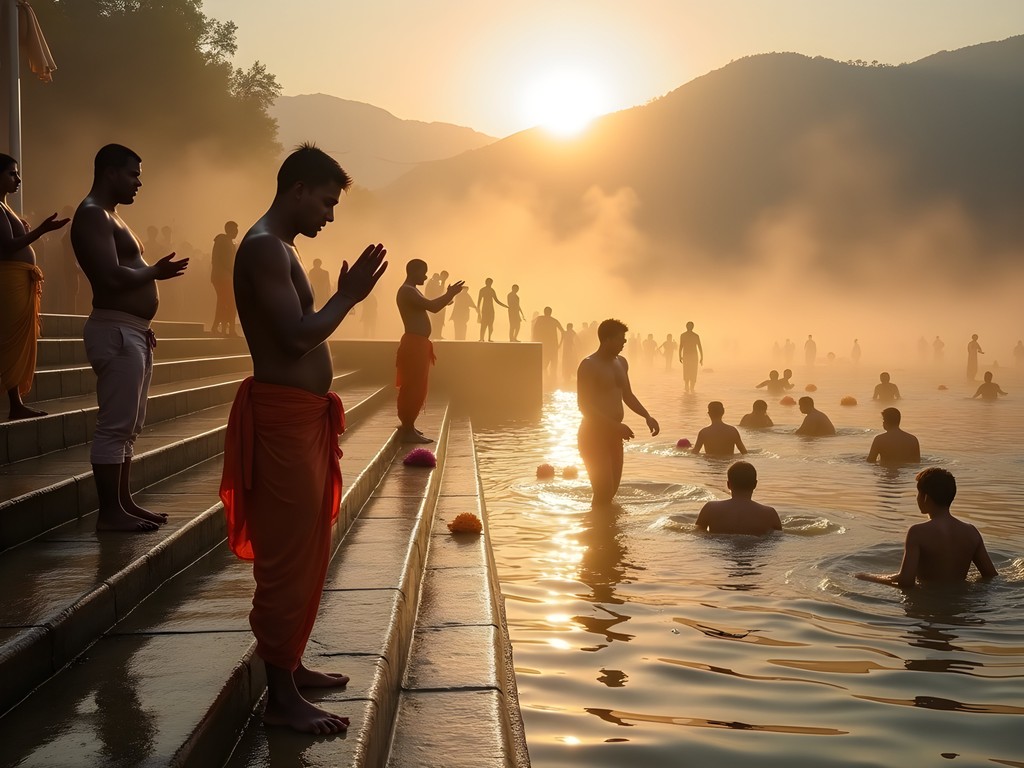
💡 Pro Tips
- In Rishikesh, observe but don't photograph people during their private bathing rituals in the Ganges
- Carry a reusable water bottle that can be filled from Braga's historic fountains—many still provide drinking water
- Visit Rishikesh's ghats at sunrise when the light on the water creates spectacular photographic opportunities
The Economics of Sacred Tourism
Both Rishikesh and Braga have long histories as pilgrimage destinations, but today they navigate the complex relationship between spiritual authenticity and tourism economics. This tension manifests in their architectural preservation and adaptation.
In Rishikesh, the ashram that once hosted The Beatles (now known as The Beatles Ashram) stands as a fascinating case study. Abandoned for decades and reclaimed by jungle, it was reopened in 2015 as a tourist attraction. Walking through its crumbling meditation halls covered in vibrant murals added by visiting artists, I witnessed a space in transition—neither fully sacred nor fully secular.
"We're trying to honor both the spiritual heritage and the cultural significance," explained Rajiv, a local conservation officer. "It's a delicate balance."
Similarly, Braga's religious sites have adapted to tourism while maintaining their spiritual function. At Bom Jesus do Monte, a funicular railway now offers an alternative to climbing the monumental staircase, making the sanctuary accessible to more visitors. The Cathedral Museum charges an entrance fee that helps fund preservation efforts.
Both cities reveal how sacred architecture evolves when exposed to global tourism. In Rishikesh, new luxury yoga retreats incorporate traditional architectural elements while adding modern amenities. In Braga, former monasteries have been converted into boutique hotels that preserve historic structures while adapting them for contemporary use.
For travelers seeking to document these sacred sites respectfully, I found the travel tripod essential for low-light interior photography where flash is prohibited or inappropriate. Its compact size made it easy to carry between multiple sites each day, while providing the stability needed for capturing architectural details in dimly lit church interiors and dawn ceremonies along the Ganges.
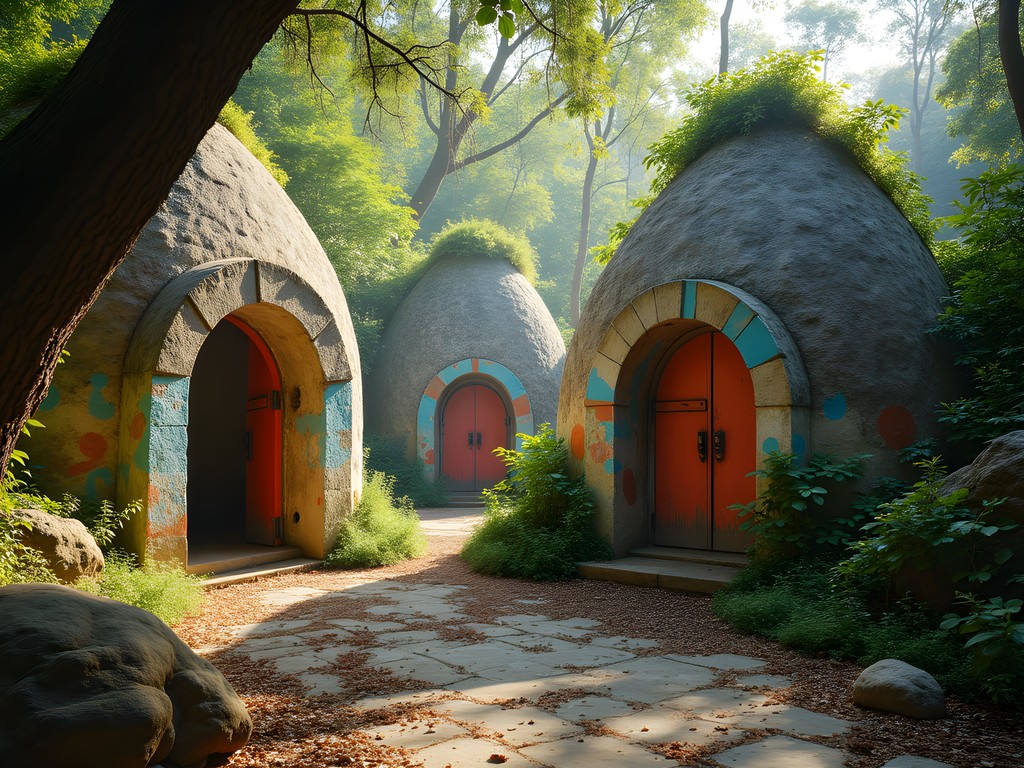
💡 Pro Tips
- Support conservation efforts by paying suggested donations at religious sites, even when not strictly required
- Consider visiting major sites with a knowledgeable local guide who can explain appropriate behavior and rituals
- Look for locally-made religious crafts as meaningful souvenirs that support traditional artisans
Preservation Challenges in Sacred Landscapes
The conservation challenges facing religious architecture in Rishikesh and Braga reveal contrasting approaches to preservation that reflect deeper cultural values.
In Rishikesh, many temples follow a tradition of continuous renewal rather than strict historical preservation. The 13th-century Bharat Mandir, the oldest temple in the city, has been repeatedly rebuilt after flooding and earthquakes. Rather than attempting to maintain original materials, caretakers focus on preserving ritual functions and spiritual significance.
"The temple lives through practice, not just through stone," explained Pandit Sharma, a temple priest. This philosophy creates a more fluid relationship with architectural heritage than typically found in Western contexts.
By contrast, Braga's approach to sacred architecture emphasizes material authenticity and historical documentation. At the Braga Cathedral, I observed conservators meticulously restoring 18th-century azulejo tiles using historically accurate techniques and materials. The process privileges the artifact's original state over contemporary reinterpretation.
Environmental threats create additional preservation challenges in both locations. In Rishikesh, increasing Himalayan flooding threatens riverside temples, while in Braga, acid rain and pollution damage intricate Baroque façades. Climate change accelerates these processes in both regions.
During my exploration, I participated in a volunteer day with a local conservation group in Rishikesh, removing plastic waste from temple surroundings. This experience reminded me of how ecological and cultural preservation are increasingly inseparable—a lesson I first learned while covering cricket matches in Sri Lanka, where ancient temple grounds often double as community gathering spaces that require collective stewardship.
For documenting these conservation efforts and architectural details, I relied on my travel journal to record observations and sketch architectural elements that photography couldn't adequately capture, especially in dimly lit interiors where certain details were better rendered by hand.

💡 Pro Tips
- Research current conservation projects before visiting and consider contributing time or resources
- Look for guided tours specifically focused on architectural preservation to gain deeper insights
- Respect rope barriers and restricted areas at religious sites—they often protect fragile structures or ongoing restoration work
Final Thoughts
As my two-week journey between Rishikesh and Braga concluded, I found myself reflecting on how sacred architecture reveals our deepest cultural values. In Rishikesh, temples embrace impermanence and integration with natural surroundings, while Braga's churches celebrate human achievement and historical continuity. Yet beneath these differences lies a universal human impulse to create spaces that connect us to something greater than ourselves. Whether ascending the Baroque staircase at Bom Jesus or descending the ancient ghats of the Ganges, we participate in a shared human experience of seeking transcendence through physical journey. As climate change and mass tourism present new challenges to these sacred places, their preservation becomes not just an architectural concern but a spiritual one—protecting not only stones and structures but the continuing human capacity for wonder. I invite you to visit these remarkable sites with open eyes and respectful hearts, ready to learn from both their differences and their surprising similarities.
✨ Key Takeaways
- Sacred architecture reflects fundamental cultural values about permanence, nature, and human achievement
- Both Hindu and Catholic traditions use physical journeys through architectural space as spiritual metaphors
- Water plays a central role in religious architecture but is integrated differently across traditions
- Preservation approaches reveal different priorities—ritual function in Rishikesh versus historical authenticity in Braga
📋 Practical Information
Best Time to Visit
September-November (fall) for moderate temperatures and fewer tourists in both locations
Budget Estimate
$2,500-3,500 for two weeks excluding international flights
Recommended Duration
5-6 days in each location with travel days between
Difficulty Level
Moderate Due To Hillside Locations And Extensive Walking














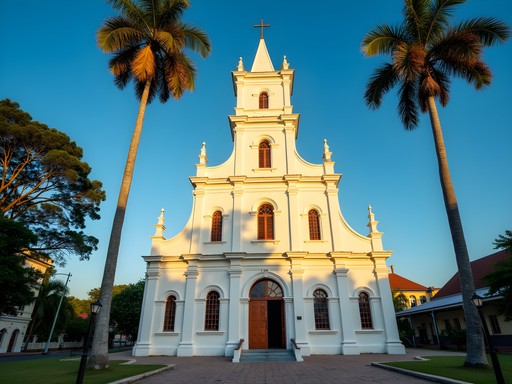
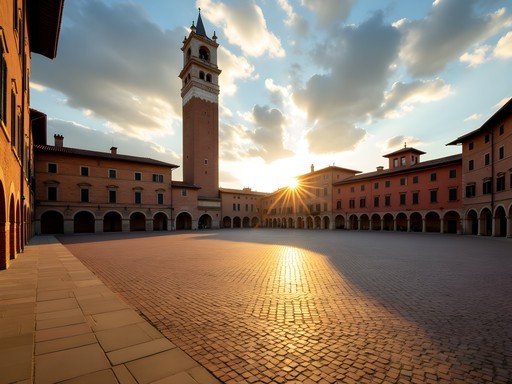
Comments
wanderlust_emma
The photos of Bom Jesus are stunning! Adding this to my bucket list!
Sophia Gomez
Amit, this comparative approach is brilliant! I was in Rishikesh last month for a business conference (extended my stay, of course) and found myself completely captivated by the temples. What struck me most was how the architecture in Rishikesh seems to intentionally blend with nature, while in European sacred sites like Braga (which I visited in 2023), the architecture often aims to dominate the landscape. Your observation about water as a sacred element is particularly insightful. During my stay, I participated in a small Ganga aarti ceremony, and the reverence for the river was palpable in a way that's hard to describe. I think you captured that essence perfectly in your writing. Did you notice how the soundscapes differ between these sacred spaces too? The bells and chants in Rishikesh versus the more solemn atmosphere in Braga's churches created entirely different meditative experiences for me.
bluebackpacker
Those sunset shots of the Ganges are STUNNING! What camera do you use?
Amit Sullivan
Thanks! Just my trusty Sony A7III with the 24-70mm lens. The light in Rishikesh does most of the work!
roamexplorer
What an incredible comparison! I've been to Braga but not Rishikesh yet. The Baroque staircase at Bom Jesus do Monte literally took my breath away (partly from climbing it, haha!). The way you connected the water rituals between these two places is something I never considered. In Braga, I remember watching elderly locals filling small bottles with water from the fountains - apparently it has healing properties! Your section on sacred tourism economics was spot on too. Braga definitely sees that balance of pilgrims and tourists. Now I'm inspired to visit Rishikesh to experience the comparison firsthand!
travelspirit88
Just got back from Rishikesh last month and your post captures it perfectly! The evening aarti at Triveni Ghat was one of the most moving experiences of my life. The way the architecture frames these rituals is something I never considered before reading your comparison. Did you stay at an ashram while there? I spent 3 nights at Parmarth Niketan and the morning yoga sessions with the Ganges backdrop were incredible.
adventureclimber
Great post! How difficult was it getting between sites in Braga? Is public transport good there?
Amit Sullivan
Thanks for asking! Braga's city center is quite walkable for the main churches. For Bom Jesus do Monte, there's a regular bus (line 2) from the city center that takes about 20 minutes. The public transport is reliable and affordable!
adventureclimber
Perfect, thanks! Adding this to my Portugal itinerary.
Elena Wells
Amit, this resonates so much with me! I visited Rishikesh last year during my budget backpacking trip through Northern India. That moment you described at Triveni Ghat during the evening aarti ceremony was exactly how I felt - completely transported. The way the architecture frames these spiritual experiences is something I've been thinking about a lot. I found the ashrams in Rishikesh to be so purposefully designed to create contemplative spaces, while still feeling accessible. Did you stay at any ashrams during your visit? I spent three nights at Parmarth Niketan and the morning yoga sessions overlooking the Ganges were life-changing.
roamexplorer
Elena - did you find it easy to arrange the ashram stay? Planning a trip there next spring!
Elena Wells
@roamexplorer Super easy! Most have websites now where you can book directly. Just bring a good travel journal to document the experience - it's truly special.
happyking
Fascinating comparison! Never thought about the parallels between these two spiritual destinations.
greenblogger9025
This is fascinating! I've never been to either place but I'm interested in spiritual tourism. Do you need to be religious to appreciate these sites? And which would you recommend for a first-timer?
Amit Sullivan
Great question! You definitely don't need to be religious - both places welcome respectful visitors of all backgrounds. For first-timers, it depends on what you're comfortable with. Rishikesh is more immersive and can be overwhelming (in a good way!), while Braga offers a more structured experience. I'd recommend bringing a travel journal to reflect on your experiences - I found writing really helped process the spiritual aspects of both places.
greenblogger9025
Thanks Amit! That's really helpful. I think I'll start with Portugal then work up to India for my next big trip. The journal idea is perfect too!
Casey Andersson
Amit, what a thoughtful comparison! I visited Rishikesh last year during my India tour and was equally moved by the relationship between architecture and spirituality. The way the ashrams seem to grow organically from the riverbanks creates such a different feeling than the imposing European cathedrals. I'm planning a Portugal trip next spring and will definitely add Braga to my itinerary now. Did you find the Bom Jesus pilgrims had similar motivations to those at Triveni Ghat, or was the spiritual experience quite different?
redtime
Casey - if you're going to Braga, don't miss the little chapels along the Bom Jesus stairway. Each tells part of the Passion story. So different from Rishikesh but equally moving!
Casey Andersson
Thanks for the tip, redtime! Adding that to my notes. Did you find Braga crowded? I'm trying to time my visit for a quieter experience.
redtime
Weekday mornings were peaceful! I went up around 8am on a Tuesday and practically had the place to myself. Magical experience!
Venture X
Premium card with 2X miles, $300 travel credit, Priority Pass